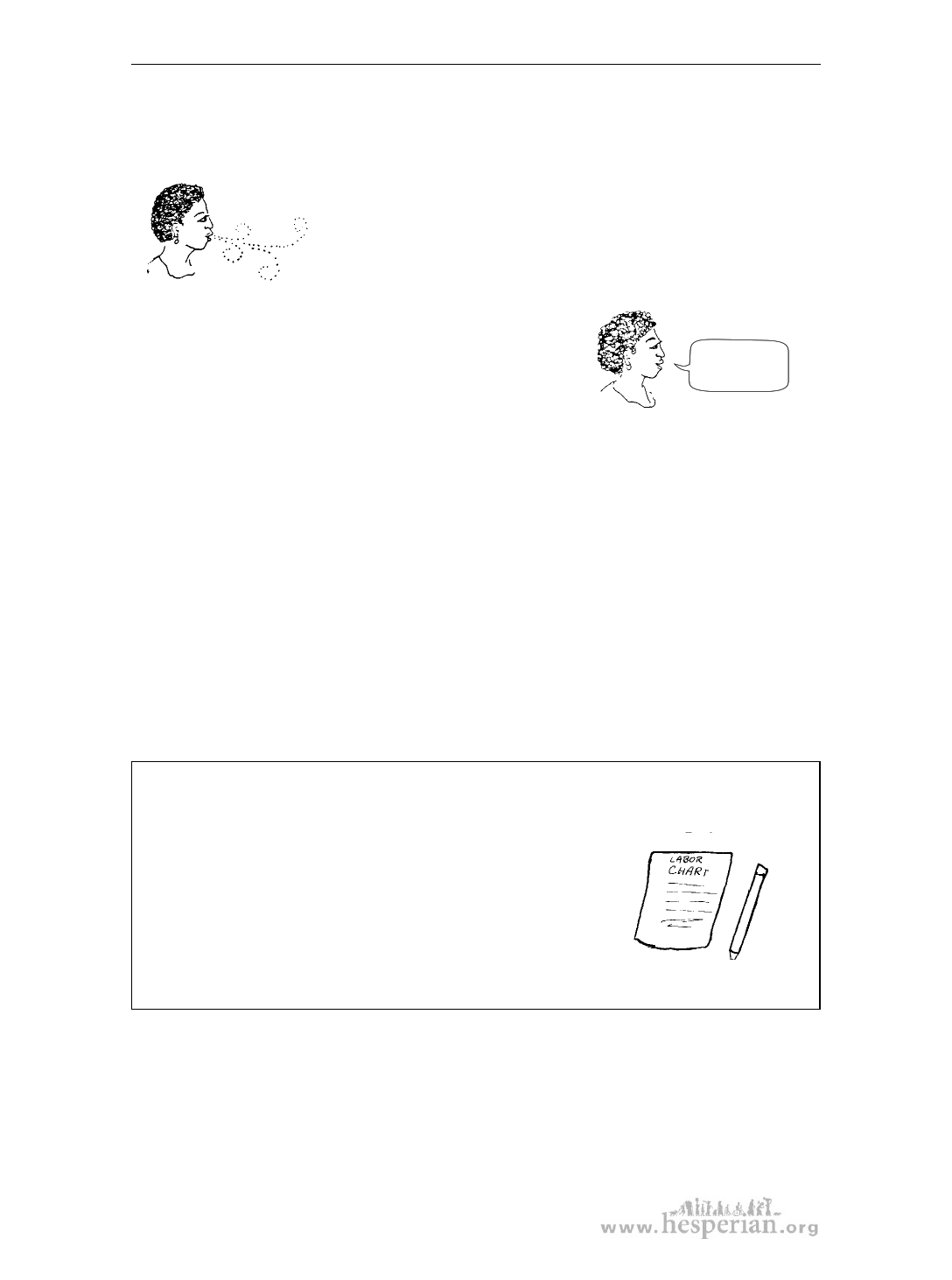
Chapter 11: Opening – stage 1 of labor
Breathing
The way a woman breathes can have a strong effect on how her labor will feel.
In the first stage of labor, there are many kinds of breathing that may make labor
easier. Try these ways of breathing yourself.
Slow, gentle breathing: Ask the woman to take a long,
slow breath. To breathe out she should make a kiss with
her lips and slowly blow. Breathing in through the nose
can help her breathe slowly.
Hee breathing: The woman takes a slow deep
breath and then blows out short, quick breaths while
she makes soft “hee, hee” sounds.
Panting: The woman takes quick, shallow breaths.
Hee, hee,
hee, hee…
Strong blowing: The woman blows hard and fast.
Encourage mothers to try different ways of breathing throughout labor.
Signs for the midwife to check in stage 1
When you first arrive at a labor, or when the mother comes to you, you should
check her and the baby thoroughly for both healthy and warning signs. Some
signs, such as the position of the baby, usually only need to be checked once.
Other signs must be checked more than once — and some more often than others.
If you know how to do vaginal exams, it may be tempting to do them to find
out how far along labor is. But remember that each time you put your fingers
(or anything) inside the woman you add to her risk of infection. Try to use other
ways to know how far along labor is.
Signs to check during stage 1
• baby’s position ������������������������������������������������������������������when you first see the mother in labor
• baby’s heartbeat ��������������������������������������������������������������every hour
• mother’s pulse ������������������������������������������������������������������every 4 hours
• mother’s temperature ������������������������������������������������every 4 hours
• mother’s blood pressure ������������������������������������������every hour
Check all these signs more often if there are warning signs.
If you can, write down what you find each time you check.
The baby’s position
It is wise to check the baby’s position early on in labor (see page 135 to learn
how). Checking the baby’s position can tell you:
• if the baby is lying head down, and which way he faces.
• if the baby is moving down through the mother’s pelvis.
170
A Book for Midwives (2010)